Trip To Bhojeshwar Shiva Temple in Bhojpur Bhopal
Hinduism is the most followed religion in India and nearly 79% of the population of India practice Hinduism. Throughout India, you will find temples dedicated to different Gods of Hinduism. There are four sects in Hinduism (Vaishnavism, Shaivism, Shaktism, and Smartism) in which Shaivism is an important sect. People following Shaivism worship Lord Shiva as the supreme deity and believe Lord Shiva is the destroyer of ignorance and he creates, protects and transforms the universe. Lord Shiva is usually worshiped in the form of Shiv Lingam which is an important symbol in Hinduism. There are many temples dedicated to Lord Shiva throughout India and these temples attract millions of visitors and pilgrims every year.
The famous Shiva Temples in India include the 12 Jyotirlinga and Pancha Bootha Sthalas and Panch Kedar. Even one of the toughest pilgrimages in the world i.e. The Amarnath Yatra is dedicated to Lord Shiva. It is believed that Lord Shiva resides on Mount Kailash (a peak never scaled by any mountaineer). Most of the temples dedicated to Lord Shiva are very famous but there is one temple in Bhopal, Madhya Pradesh which holds the record of second Largest Shiv Lingam in India but only a few people know about it. The temple is known as Bhojeshwar Shiva Temple and it is just 30 Km from the city of Bhopal. While I was attending a marriage ceremony in Bhopal, I got to know about this magnificent Shiva temple and I decided to visit this temple as soon as the ceremony was over. In this article, I would be describing my Trip to Bhojeshwar Shiva Temple in Bhojpur, Bhopal, how to reach Bhojeshwar Temple, the outstanding features of Bhojeshwar Temple and other places to explore nearby to Bhojeshwar Temple.
Qucik Navigate:
My Trip to Bhojeshwar Shiva Temple in Bhojpur
As mentioned earlier I was in the city of Bhopal to attend the marriage ceremony of one of my friends. There were many guests in the ceremony and one of the guests was working in the History & Archaeology Department of Bhopal University. He informed me that although there are many places to visit in Bhopal, the two must-visit places are the Bhojeshwar Temple and the Bhimbetka Caves. Due to time constraints, it was not possible for me to cover both the places and therefore I decided to visit the Bhojeshwar Temple as it was at a closer distance than the Bhimbetka Caves.
The Bhojeshwar Temple is nearly 30 Km from the main city and the temple is situated in a small town called Bhojpur. The town of Bhojpur lies in the Raisen District and the name Bhojpur is derived from the name of the most famous king of the Paramara Dynasty i.e. King Bhoja ( 1010 AD–1055 AD).
Read Also: A Trip to Dhaundhar Waterfall of Jabalpur
From Bhopal City to Bhojeshwar Temple in Bhojpur
The Bhojeshwar Temple is only 30 Km from Bhopal City but the temple is situated in the rural area, therefore, the frequency of the bus is very low. You can get a regular bus service to a point from where the temple is only 11Km and from there you can book an Auto Rickshaw or Taxi. If you are planning to book a cab from the main city then it would charge around INR 1000-1200. After crossing regular city traffic it would take around 20 minutes to reach the Bhojeshwar Temple. The last 11 km of the journey to Bhojeshwar Temple is quite pleasing as there is no traffic on road (you have to leave the main road) and the road is in very good condition with trees on both sides. You will start seeing the temple when you are approximately 3-4 km away due to its huge size. Many websites mention that there is an entry fee of INR 10 but it is not correct. The only payment I made was for cab parking which was INR 20. There are many shops and restaurants in the vicinity of the temple and you can purchase necessary items to perform Pooja in the temple.
The Bhojeshwar Shiva Temple of Bhojpur Bhopal
By looking at the Bhojeshwar Temple you will find it like any usual temple constructed in India. Once you read about the glorious history of the temple and facts associated with it you will feel proud of the ancient Indian architectural techniques and the ruler who commissioned the construction of this temple. The Bhojeshwar Temple is famous for two things. One of the sanctums of the temple hosts the second-largest Shiv Lingam in India. The Shiva Lingam is 6.7 meters tall (22 feet) and 2.3 meters (7.5 feet) in circumference. The Shiv Lingam present at Bhojeshwar Temple is taller than the Shiv Lingam present in Brihadeeshwara temple in Tanjavur in South India or any other Jyotirlinga Temple in India.
Video of Bhojeshwar Shiva Temple in Bhojpur
The second important feature of the temple was its open roof which Archaeological Survey of India covered in the year 2006. The open roof indicates that the construction of the temple was not complete and the nearby area suggests the same. The area nearby to temples have markings which show that they were to host some dedicated section of the temple. Since the construction was left midway the temple never attained its true architectural height. According to historians, there can be many reasons why the construction of the temple was left in midway. Some suggest that it may be due to some natural disaster, a lack of resources, or a war. According to the local priest of the temple, there was a condition that the temple should be constructed in one day and throughout the night the construction work continued. By the morning the only roof of the temple was left to construct and since construction work was not possible in the morning the roof of the temple was never completed. Although this story is not possible as a single rock constituting the temple weights 70 tones so it was not possible to move so many rocks in a single day.

The Bhojeshwar Temple is situated on a top of hillock and Betwa River passes nearby to the temple. A large reservoir was constructed nearby to the temple to facilitate the construction of the temple. The temple compound also hosts a small museum that depicts the history of Bhojeshwar Temple, different stages of construction of Bhojeshwar temple and many ancient relics which were once the part of Bhojeshwar temple.
History of Bhojeshwar Shiva Temple in Bhojpur
Although the Bhojeshwar Temple was constructed by Paramara King Bhoja in his reign from (1010 AD- 1055AD), Lord Shiva was worshipped here from the Mahabharata time. According to locals a Shiv Lingam was placed here by Pandavas as their mother Kunti was a devotee of Lord Shiva. This story could be true as the Bhimbetka (“sitting place of Bhima“) Rock Shelters which is associated with Bhima is only 24 Km from Bhojeshwar Temple. Locals also state that this was the same place where Kunti abandoned his elder son Karna (Karna was born before Kunti was married to King Pandu). Even the construction of Shiva Temple at Bhojpur was commissioned by King Bhoja’s uncle Vakpati Munja in the year 976 AD but he was not able to complete the construction due to regular wars. The temple priest states that King Bhoja was suffering from skin disease (probably Leprosy) and some priests suggested his disease can be cured if he worships Lord Shiva from the water collected from 9 different rivers.
There is another story that King Bhoja was cursed in his childhood as his mother died when he was at a small age and to remove that curse he has to worship Lord Shiva from the water of 9 different rivers. So King Bhoja constructed two dams near the temple site to hold the water of River Betwa and its tributary (Kaliasor River). He even constructed one dam at the main city of Bhopal to divert the water towards Bhojeshwar Temple. Devotees continued to pray Lord Shiva here throughout the 1000 years but the condition of the temple deteriorated with time. In 1951 the site was handed over to the Archaeological Survey of India for conservation. In the year 2006, the ASI team carried out the restoration of the monument and closed the ceiling with a new architectural component matching the original one. The Bhojeshwar Shiva Temple is under the protection of the Archaeological Survey of India and since the temple is very close to the City of Bhopal it attracts a large number of tourists. The temple also witnesses a huge crowd on the auspicious day of Maha Shivratri and Naag Panchmani. The state government organizes Bhojpur Utsav, a cultural event in which many famous celebrities participate. The Bhojeshwar Shiv Temple also received the National Tourism Award for the year 2013–14 for the “Best maintained and Disabled Friendly Monument”.
Design and Description of Bhojeshwar Shiva Temple in Bhojpur
The Bhojeshwar Temple is constructed on a small plateau and the temple lies on a platform measuring 115 feet (35 m) long, 82 feet (25 m) wide, and 13 feet (4.0 m) high. The walls of the temple lack windows although they feature balconies in northern, southern, and eastern walls. The entrance door of the temple is 10 meters (33 feet) high and the entrance gate features sculptures of Apsaras, Ganas (attendants of Shiva), and river goddesses. The dome of the temple rests on four octagonal pillars each measuring 39.96 feet (12.18 m) in height and 15 tonnes in weight. Outside the temple in front of the entrance gate lies three platform cum temple-like structure. Out of these three platforms, two have a dome-like roof while the third platform lacks any roof. All the three platform hosts the idol a snake and Nandi Bull which are an important symbol in Hinduism and associated with Lord Shiva. Stairs are available to climb on these and perform necessary prayers and Yagna.
Shiva Lingam at Bhojeshwar Shiva Temple in Bhojpur
The Bhojeshwar Temple is famous for its massive Shiv Lingam which is the second-largest Shiv Lingam in India. As mentioned earlier the height of Shiv Lingam is 6.7 meters or 22 feet. The Shiv Lingam along with the Yoni Patta is made from a single rock which was nearly an impossible task in 1100 A.D. The dimension of Lingam alone is 7.5 feet (2.3 m) height and 17.8 feet (5.4 m) in circumference. The surface of Shiv Lingam is marked whit the word Aum (ॐ) and Tripundra (three horizontal lines usually marked on forehead) which is associated with the Shaivism sect of Hinduism. The Lingam also has a “sacred thread” called Janeu or (Yajnopavita).
The base of the Lingam i.e. the Yoni Patta is built using limestone blocks and it features three layers. The Yoni Patta is square is shape and its dimensions 21.5 feet or 6.6 m. Every day the priest of the temple performs prayers at the Shiv Lingam and washes it with water from the Betwa River reservoir.
Museum Dedicated to Bhojeshwar Shiva Temple in Bhojpur
There is a small museum dedicated to Bhojeshwar Shiva Temple and it is situated nearly 200 meters from the main temple. The museum depicts the history of Bhojeshwar Temple trough posters and sketches as well as it covers the reign of Raja Bhoja. The museum describes the reign of Raja Bhoja and important books written by him as well as the mason marks. The museum also hosts a small. There is no entry fee in the museum and the museum is open for visitors from 10:00 AM to 5:00 PM.
Places to Visit near Bhojeshwar Temple
Since the Bhojeshwar Temple lies 11 Km from the main Bhopal-Hoshangabad road there are no major places to visit within a radius of 5 km except two places which are as follow:
Parvati Cave
On the other side of Betwa River lies the ancient Parvati Cave which has images and idols of Gods. The cave also has a large number of architectural remains. Earlier the Parvati Cave was accessible by crossing the water reservoir but the area was prone to accident and therefore ASI team installed a huge net to avoid an accident. Now if you are planning to visit Parvati Cave you have to drive back 5 km and another road would leave you to Parvati Cave.
Shantinath Digambar Jain Temple Bhojpur
The temple is dedicated to Shantinath 16th Teerthankar of Jainism. The temple has an idol of Bhagwan Shantinath which is 22½ feet in height. The main idol is surrounded by idols of Bhagwan Parshvanath and Suparshvanath 7th and 8th Teerthankars of Jainism.

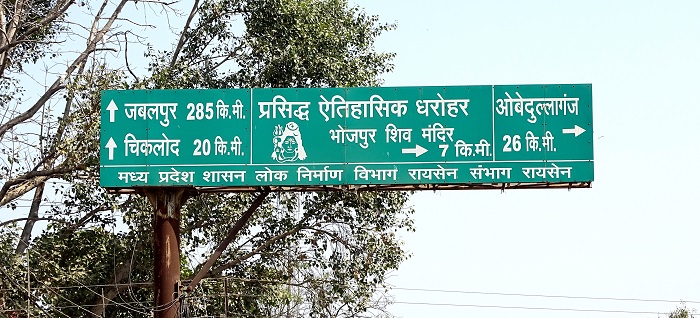
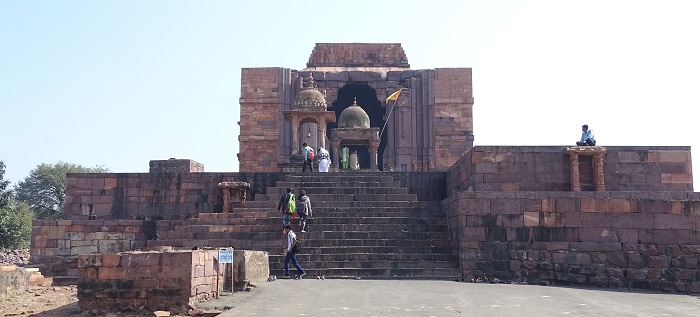
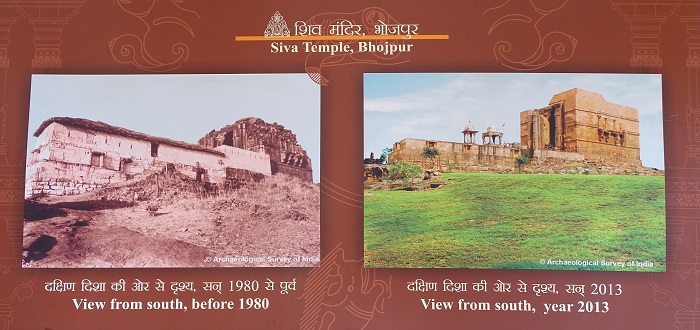
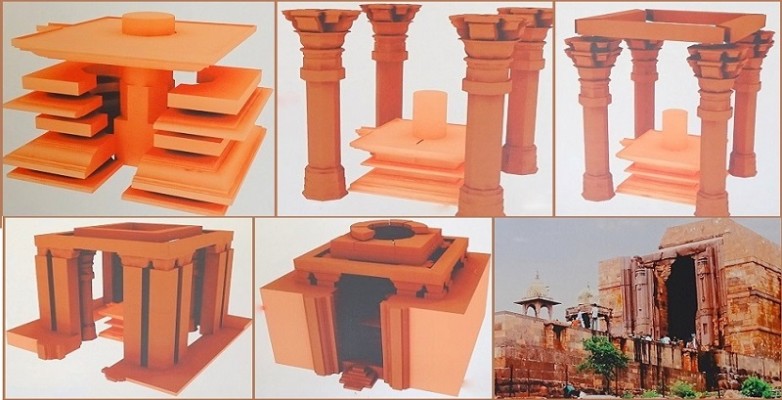
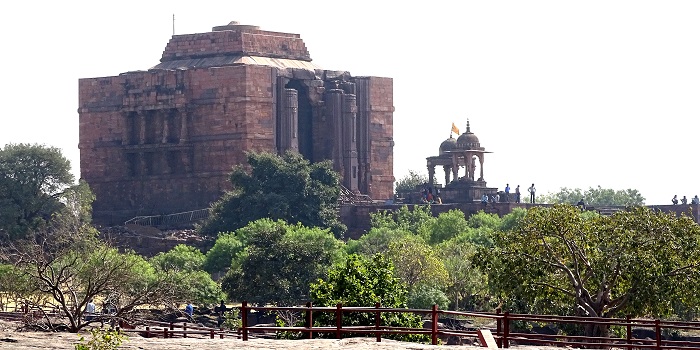
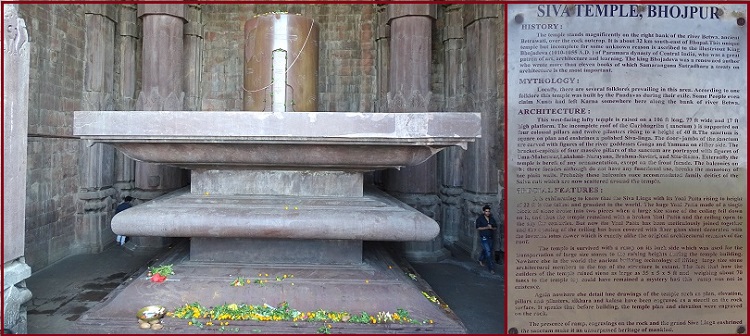
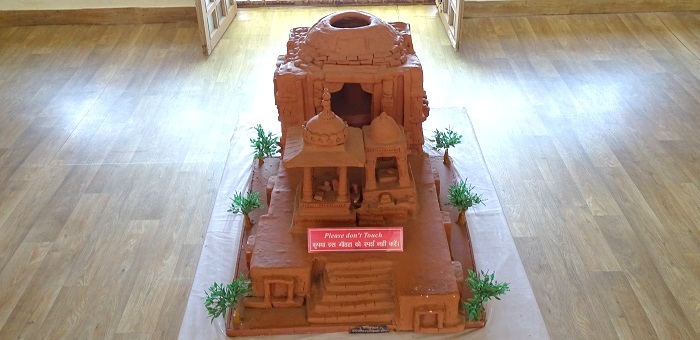
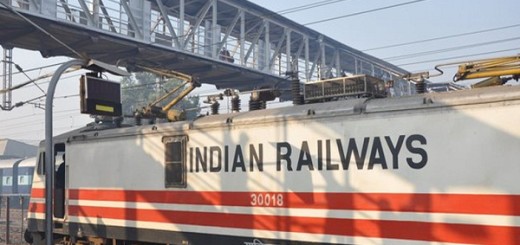
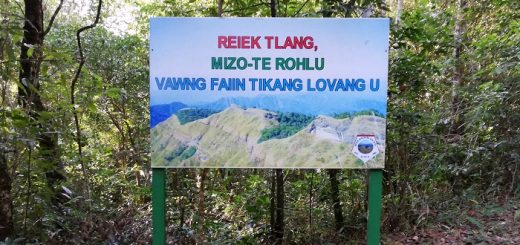


Really awesome and useful content! Thank you for spending time to share! ~Namaste